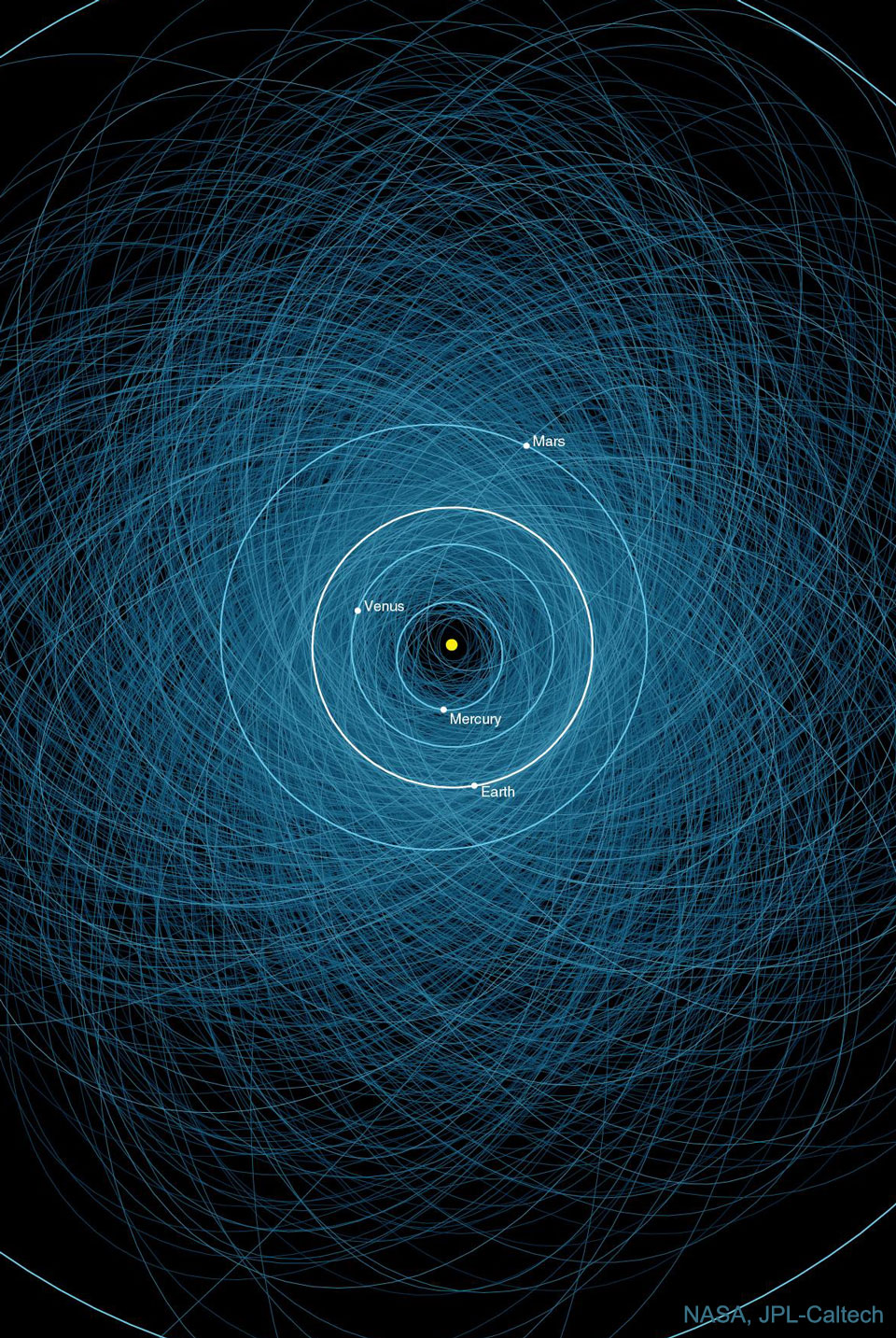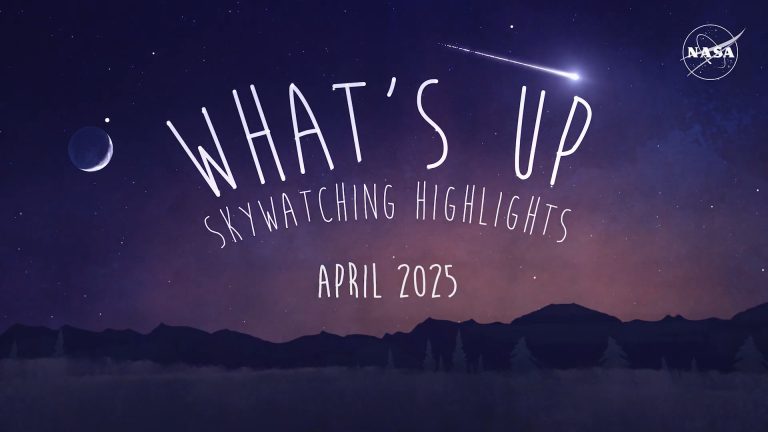2023年6月30日
Orbits of Potentially Hazardous Asteroids
Illustration Credit: NASA, JPL-Caltech
Explanation: Are asteroids dangerous? Some are, but the likelihood of a dangerous asteroid striking the Earth during any given year is low. Because some past mass extinction events have been linked to asteroid impacts, however, humanity has made it a priority to find and catalog those asteroids that may one day affect life on Earth. Pictured here are the orbits of the over 1,000 known Potentially Hazardous Asteroids (PHAs). These documented tumbling boulders of rock and ice are over 140 meters across and will pass within 7.5 million kilometers of Earth — about 20 times the distance to the Moon. Although none of them will strike the Earth in the next 100 years — not all PHAs have been discovered, and past 100 years, many orbits become hard to predict. Were an asteroid of this size to impact the Earth, it could raise dangerous tsunamis, for example. To investigate Earth-saving strategies, NASA successfully tested the Double Asteroid Redirection Test (DART) mission last year. Of course, rocks and ice bits of much smaller size strike the Earth every day, usually pose no danger, and sometimes create memorable fireball and meteor displays.
Today is: Asteroid Day
Tomorrow’s picture: three galaxies
可能会祸害地球的小行星之轨道
图示提供: NASA, JPL-Caltech
说明: 小行星会造成祸害吗?有些会,但一颗具危险性小行星在某特定年会撞击地球的可能性则很低。在过往,小行星撞击曾导致生物大灭绝事件,是以人类把寻找和编录未来可能会祸害地球上生物的小行星之工作列为优先。上图呈现了超过1,000颗可能具有危害性的小行星 (PHAs)之轨道。这些已登录、在太空翻滚的巨石或冰块,大小超过140公尺,而其通过地球时的间距小于7百50万公里,大约是月球距离的20倍。虽然这些小行星在未来的百年之中,都不会撞击地球,但并非所有具危害性的小行星都已找到,而且一百年后有些小行星的轨道难以预测。如果上述这种寛140公尺的小行星之一冲撞地球,灾害之一是会引发危险的海啸。为了探索救助地球的策略,美国国家航空航天局已在去年成功执行了双小行星改道测试任务(DART)。事实上,每天都有许多的细小的石块和冰块撞击地球,但它们通常不会带来危害,偶而甚至会形成令人难忘的火流星或流星雨。
今天是: 小行星日
明日的图片: three galaxies







